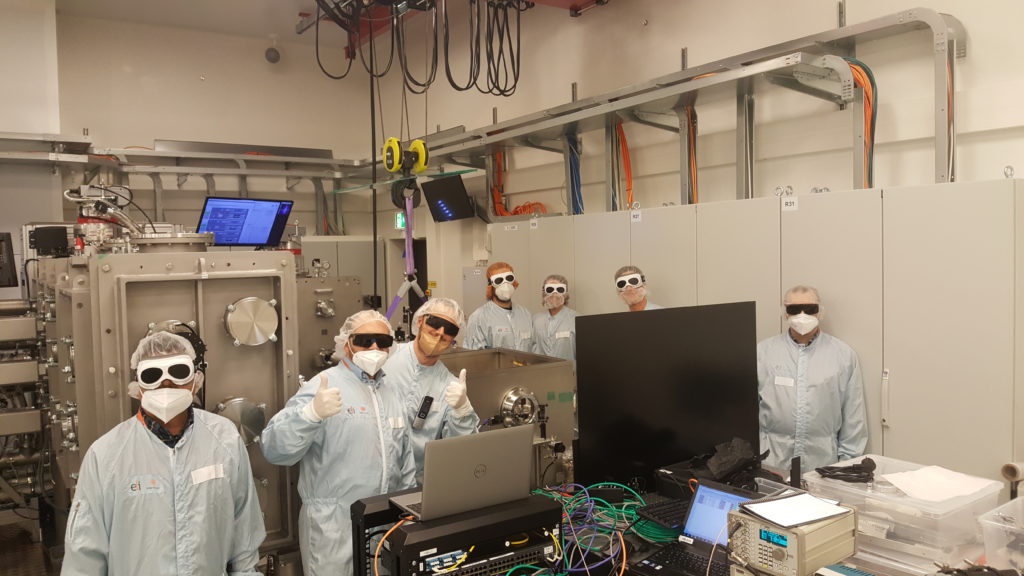
ELI facilities join forces for a new electron acceleration experiment
In the framework of IMPULSE WP3 (Ramping–up Towards Excellent Steady-State Operations), the ELI Beamlines team in Dolní Břežany was joined by colleagues from ELI ALPS initiating a long-term research collaboration. Dr. Daniel Papp and Dr. Sudipta Mondal from the Particle Acceleration and Surface Plasma Attosources groups of the ELI ALPS facility in Szeged participated in a kHz electron acceleration experiment at the ALFA end-station of ELI Beamlines. The experiment consisted of a characterisation of the L1-Allegra laser pulses at 1 kHz, pulsed gas valve operation, setting up ultra-fast probe optical line and electron beam diagnostics.
“We have been carefully focusing the laser pulses inside supersonic gas targets to generate efficiently ultra-short (fs) ultra-relativistic (10s MeV) electron beams. The goal of the ALFA experiment is to demonstrate the advantages of laser-driven electron beams for the medical and space industry,” explains Dr. Gabriele Grittani from the Radiation physics and electron acceleration group of ELI Beamlines. “Our long-term aim is to establish a beamline delivering stable and reliable watt-class laser-driven electron beams based on the L1-Allegra laser. For this reason, I think it is natural to team up with our colleagues from ELI ALPS since we both have access to unique high power kHz laser systems and I strongly believe that close cooperation could benefit both facilities towards enabling cutting-edge experiments.”
The experiment is conducted within the framework of IMPULSE Work Package 3 which aims to establish routine operations through a joint approach aiming at optimising performance, reliability and efficiency through standardisation of operational procedures and metrology and capacity building. The implement of standards and practices will drive scientific excellence and consistent quality for future user access.

“Due to the similar laser parameters available at Beamlines and ALPS – 10s of mJs at 1 kHz repetition rates – this collaboration comes naturally,” says Dr. Daniel Papp from the Particle Acceleration Group of ELI ALPS. “There are mutual benefits for these joint experiments. Initially, we can increase institutional experience with kHz repetition-rate electron acceleration, and have more beamtime available to test research equipment. In the long term, the collaboration could extend to applications, such as for ultrafast electron beams in biomedical and material science, and developing novel material investigation methods.”
This joint experiment is supported through IMPULSE (Integrated Management and Reliable Operations for User-based Laser Scientific Excellence) an EU-funded project supporting the transition of ELI to sustainable operations. As ELI enters a crucial phase with the establishment of the ELI European Research Infrastructure Consortium (ELI ERIC) and the gradual opening of the ELI Facilities to users, IMPULSE addresses key scientific, technical, organisational, and management requirements of this transition, and supports the building of user communities and expanding the ELI member consortium.